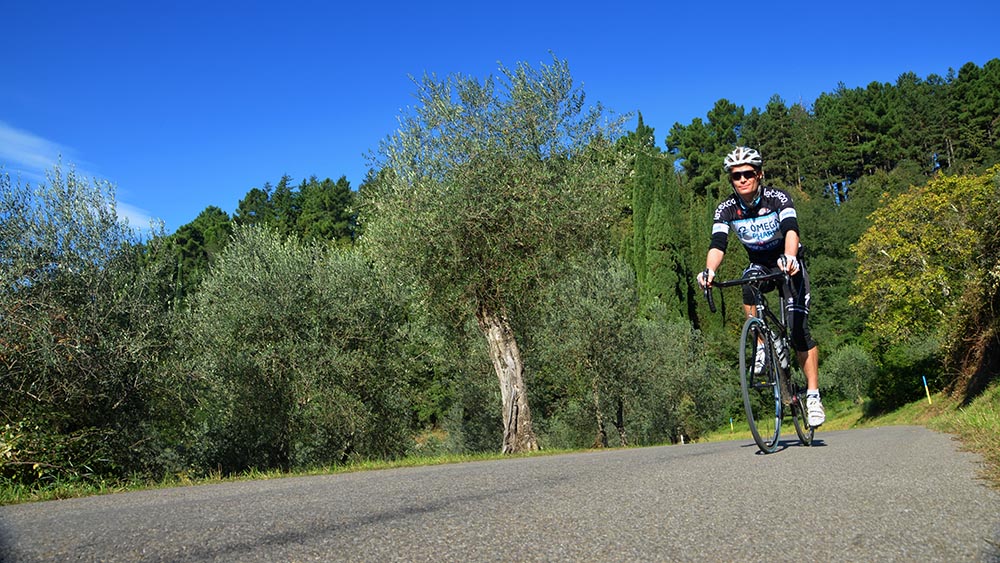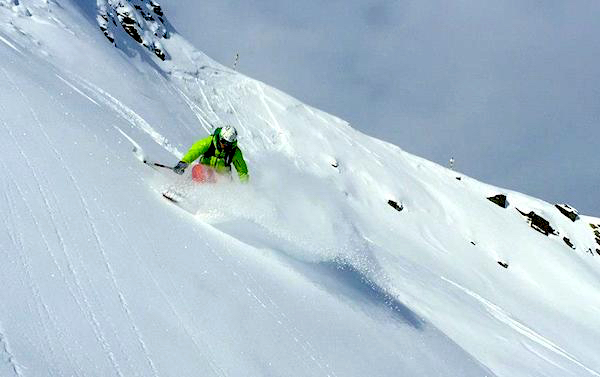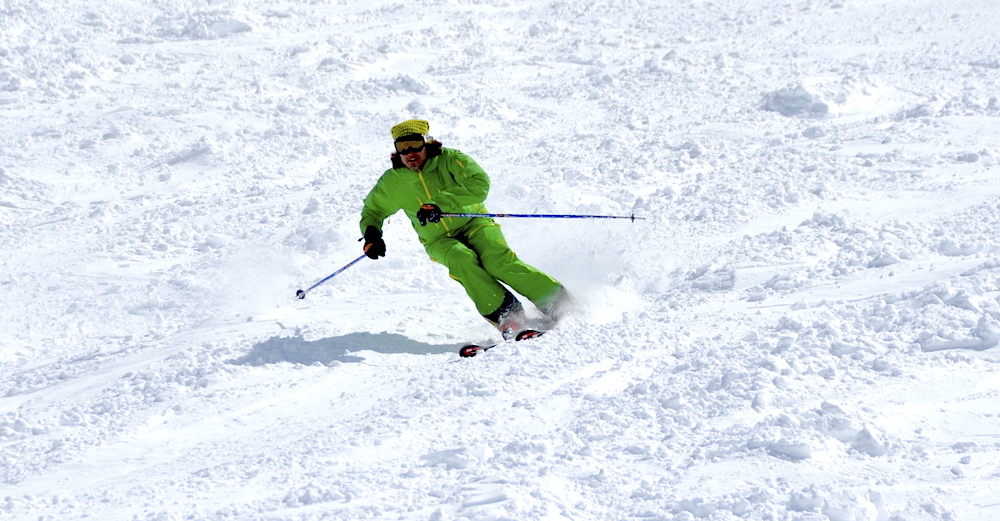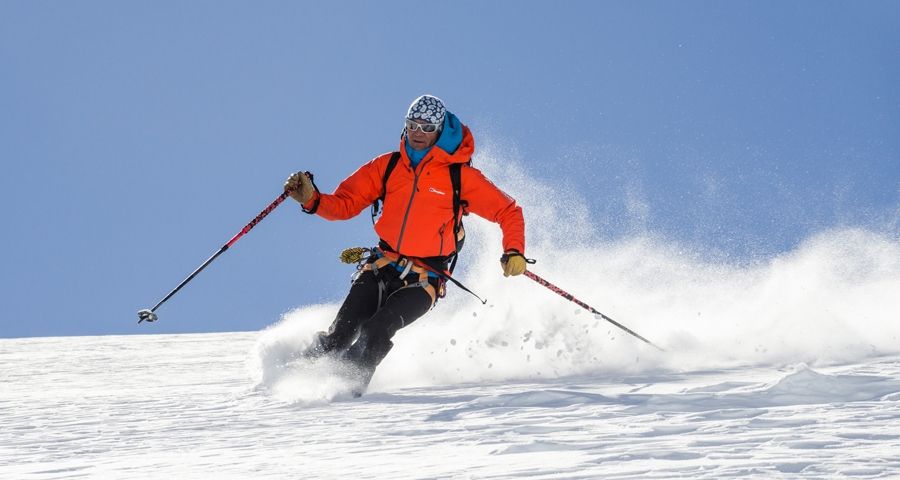Written by Jonathan
2nd January 2018
Skiing, mountains, Crosstraining, fitness, Basics, Running, Cycling, training, Instruction, Yoga, Ski Days, HIIT
Get Fit for Skiing — The Cross Training Approach

Getting yourself fitter before your next ski adventure will help ensure you really get the most of your time in the mountains. Most of us have been in the position at some point where we’ve cut short a day of skiing because of tired legs or another malaise limiting our enjoyment: a frustration clearly best avoided on your next trip with Mountain Tracks! Committing as early as possible to a regular regime of exercise is the best insurance policy in preventing a repeat of such scenarios. Adequate preparation is also key in ensuring that you’re physically strong and at the same time feel confident mentally. A combination of self-belief, physical fitness and mental acuity will place you in the best position to safely enjoy you skiing and reduce the risk of injury. Ideally, you’ll allow yourself a few months to get yourself prepared, however effective training can still be achieved even if you’ve only a few weeks to go before your trip. Don’t delay starting an exercise programme — every little helps! At Mountain Tracks we’re keen to spend as much time outdoors as possible, and pre-season cross training activities are a great way to boost fitness and aid in preparation for the coming winter of skiing. Prior to your trip, your workouts and more general engagement in exercises activities (ranging perhaps from more gentle lunchtime walks to moderate length runs) should aim toward improving the most essential aspects of fitness that will most benefit your overall skiing enjoyment. As such, you’ll need to focus in on three aspects: strength, cardiovascular fitness, and balance. As always, its important to note that you should consult with your a qualified medical practitioner before undertaking any new training routine. If at any point your experience pain or discomfort, discontinue immediately with the exercise and seek medical advice.
Cross training — the basics
Cross training is a great way to improve fitness and aid in injury prevention. Cross training helps build strength and develop a well-rounded fitness base through the effective incorporation of different sporting activities. A key element is the avoidance of too much repetition, which is normally inherent in any programme where you’d just participate in only one activity: vary the type of exercise can therefore prove a kinder option for your body. Cross training is also beneficial in that it ensures a certain variety in your everyday life — to keep you fresh, energised and committed to improving fitness and avoiding the sense of burnout or monotony that can come from the seemingly endless pursuit of just one sport.
Cycling

While cycling can prove an excellent activity for improving overall cardiovascular fitness, and is a favourite pastime for many of our mountain guides (both on and off-road), it’s also an excellent example of why the variation inherent to the cross train approach is beneficial. The bent over position adopted by the cyclist, coupled to time spent in similar sitting positions such as at a desk or driving, can cause issues with posture, in addition to back and shoulder pain with time. Furthermore, the low impact, limited weight bearing nature of cycling can lead to a reduction over time to one density — a key consideration for skiers, where decreased bone strength would be a concern. That’s not to suggest that cycling should be avoided! To the contrary, cycling is a great way to improve your fitness level, and in particular to prepare yourself for long days of ski touring activity. Time spent cycling in the hills, which mimics the pattern of exercise intensity found ascending and descending in ski touring, is a terrific way of boosting preparedness in time for the spring season. More generally, incorporating interval training into any cross training activity can prove an effective means of replicating the type of exercise you undergo while skiing. On the hill, skiing regularly incorporates a pattern whereby the lift ride to the top of the run provides a rest period, followed by a relatively high-intensity spurt physical exertion on the descent. Interval training lends itself not just to cycling and running, but other sports as diverse as swimming and hiking.
Running

Running makes an excellent complimentary form of exercise in addition to cycling in any cross training programme. It’s a very time efficient way of improving cardiovascular fitness and requires a minimal level of equipment. In particular, getting into running is very effective in strengthening the quads and hamstrings, and helps enhance both lung capacity and improve bone density. By adding one or two sessions each week to your schedule of running to your cross training you will facilitate building your strength, balance and developing a more well-rounded base of fitness. Running is load bearing and aids in maintaining proprioception and balance, both key attributes of a competent skier. Running also aids in maintaining upper body mobility, and thereby assists in developing your overall efficiency when exercising, and thus enhances performance. Adding in running to any exercise regime is also beneficial simply for the variety it provides, helping prevent burnout for over repetition and engagement in the same activity day in, day out. If possible, find a route that takes you into nature and allows you to experience the broader beneficial effects associated with being in the outdoors. Running can prove an excellent means of reducing stress and improving wellbeing more generally.
Swimming
Swimming is often neglected in efforts to create a balanced programme, but the sport is in fact a highly favourable exercise option in developing a broader cross training schedule. Whilst many appreciate the value of swimming as a low impact activity, skiers often overlook the benefits of swimming in increasing lung capacity and lengthening the hip flexors. More generally, it’s also an excellent form of exercise for increasing your range of motion and, of course, for improving core upper body strength and stability.
Yoga and Pilates
You only have to spend a little time in any ski resort these days to observe the popularity of both yoga and Pilates amongst seasoned skiers. Amongst mountain guides, ski instructors and sponsored freeride athletes, nowadays it’s quite rare to find anyone that hasn’t at some point incorporated these activities into their fitness programme. Adding either yoga or Pilates (even both, if you’re especially keen!) will enhance your overall base of fitness by improving flexibility and core strength. Flexibility is a key requirement for skiers in injury prevention. Both activities are also highly regarded by athletes for they aid relaxation and have an impressive revitalising effect in recovery. Regular participation in either yoga or Pilates can also improve your general mental health, wellbeing and control of breathing. Indeed, some participants have identified the practice of focused breathing as helping as an aid when focusing under pressure: a situation that may arise too when you’re up on the mountain, as opposed to in a warm yoga studio!
… and what to do on ski days

Remember, it’s always a good idea to begin your ski day with a few simple warm-up exercises and activities, no matter how great a shape you’re in. Whilst of late there have been a lot of conflicting pieces of research circulating as to the overall benefits of pre-exercise stretching and warm-up regimes, a series of moderate stretches and movements, coupled with perhaps a gentle walk. In taking the time to prepare in this way you’ll also allow yourself an opportunity to reflect on the day’s activities ahead and compose yourself mentally. Mental preparation is often overlooked, but an important factor particularly in injury prevention. Before your first turns of the day, you should allow yourself a few moments to enhance your preparedness: consider your objectives for the day, run through a mental check of whether you’re properly equipped. Heading off-piste? Have you the requisite equipment in your avalanche rescue kit, for example (including a functioning transceiver that’s been checked to perform both in transmit and receive mode that morning?). It’s important not to rush through these checks and allow yourself ample time to facilitate this process of mental preparation: it’s important not just for you, but also for others in your party with whom you’ll spend the day skiing.
In need of a little extra instruction?

If you're in need of a little more guidance in implementing your own fitness plan for your approaching ski trip, we can recommend the SkiFit App developed by Neil MacLean-Martin, a Chamonix-based elite sports physiotherapist based at La Clinique du Sport. The SkiFit is a video-based online training programme and mobile app aimed at skiers who are serious about getting fit for their winter season. The programme offers a series of high quality exercises specific to snowsports which can be done at home or in the gym, and is suitable for all levels of fitness. By signing up to the SkiFit programme you can also get free access to the RunFit and TriFit programmes for free! This winter Mountain Tracks has teamed up with La Clinique du Sport to offer a special 20% discount on the app: just visit the dedicated webpage for the app and add the promo code MTRACKS17 to get your discount!
 Off-Piste
Off-Piste Ski Touring
Ski Touring Via Ferrata
Via Ferrata Ice Climbing
Ice Climbing Alpine Glacier Trekking
Alpine Glacier Trekking Worldwide Trekking
Worldwide Trekking









 Travel Website Development
Travel Website Development